I want to drive a strip of LEDs from a microcontroller using PWM to control the brightness. The strip I have takes about 1.5A at 12V. I'm only familiar with purely low power digital electronics so wanted to check if these assumptions are correct and get any advice :-
- If I use an NPN transistor to drive this, the transistor when turned on will drop about 0.7v so will dissipate over 1Watt when turned on.
- This would require a reasonably chunky transistor and a heat sink which I want to avoid if possible.
So I'd be better using a mosfet that has much lower resistance so I might be able to get away with a smaller one and perhaps no heatsink?
However looking at the spec of the various MOSFETs I can buy it looks like any that can pass this amount of current require considerably more than 3.3v I can get from my microcontroller to turn on fully.
- So am I best to have a small NPN transistor switching 12v to the input of a mosfet to control the actual LED strip? (Sorry I can't draw a diagram on this computer but can add one later if needed)
Are my assumptions correct, and does anyone have any advice or a better way? I'd also be interested in recommendations for suitable parts although that's not my main question.
(Edit: I looked for other posts that answered this and didn't find anything that was quite what I wanted, if someone has a link to a duplicate then please post it and I'll happily close the question).

